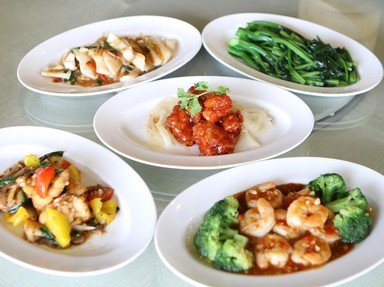Quiz Answer Key and Fun Facts
1. After landing, we go straight to Quanjude Restaurant to partake in the capital's most famous dish, Bei Jing Kao Ya. What is Bei Jing Kao Ya?
2. Let's head north now, to Heilongjiang Province, close to the Siberian border, where the winters are long and harsh. To warm ourselves up we order 'Di San Xian'. What are we eating?
3. Now we head to the roaming grasslands of Inner Mongolia, where we sit down with some of the locals to enjoy a tasty feast of 'Shuang Yang Rou'. What is Shuang Yang Rou?
4. We continue our journey westwards to Xinjiang, in the heart of Central Asia. We first enjoy a snack of lamb kebabs from the street vendors, and then sit down to gorge ourselves on Shou Zhua Fan. What is Shou Zhua Fan?
5. Now we head south to Sichuan, famous for its spicy cuisine. Never one to resist a challenge, I order a big bowl of Shui Zhu Yu. What is Shui Zhu Yu?
6. Let's head further south to Yunnan Province, close to borders of Laos, Vietnam and Myanmar. We order a local specialty - 'Guo Qiao Mi Xian'. What are we eating?
7. We now travel north-east to Guangdong Province. We head into a typical dim sum restaurant, and order baskets and baskets of food. One of the baskets contains 'Xia Jiao', or 'Har Gow' in the local Cantonese dialect. What's in our basket?
8. Up the coast we go, and into Fujian Province, where we have ordered in advance a bowl of the famous 'Fo Tiao Qiang'. What are we eating?
9. Join me as we continue our journey up the eastern coastline, where we reach the modern city of Shanghai. We're in luck, it's the perfect season for the local delicacy of 'Da Zha Xie' - what are we eating?
10. We are heading back to Beijing, but on our way we stop into a famous restaurant in Tianjin called 'Gou Bu Li'. This restaurant is famous for serving 'Baozi'. What are Baozi?
Source: Author
Honggui
This quiz was reviewed by FunTrivia editor
Bruyere before going online.
Any errors found in FunTrivia content are routinely corrected through our feedback system.
